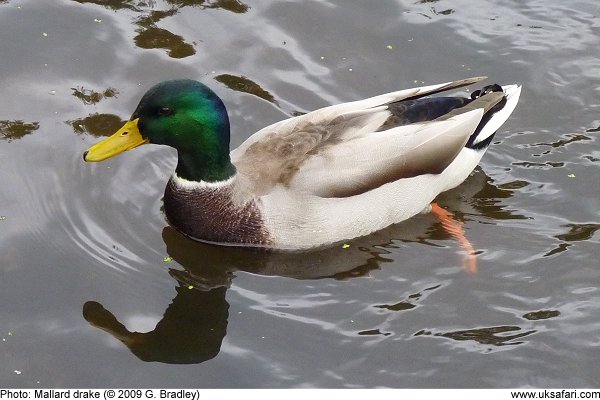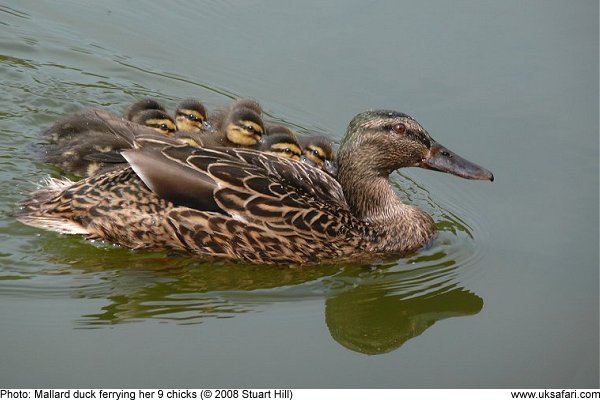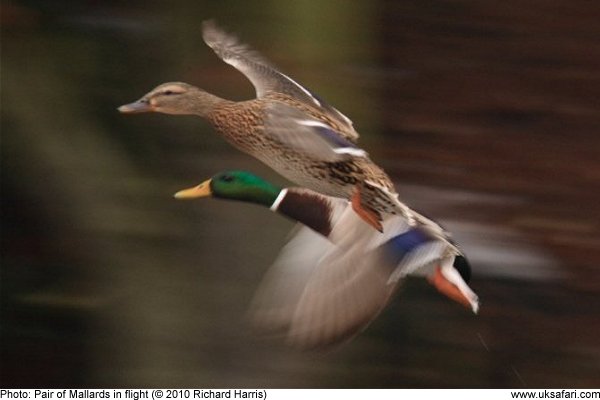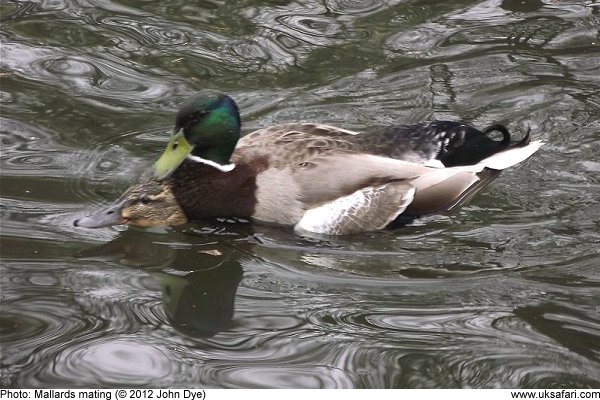 Quick Facts
Quick Facts
Scientific name: Anas platyrhynchos
Size: Grow to around 55cm in length
Distribution: Found throughout the UK
Months seen: All year round
Habitat: Ponds, lakes, rivers, canals and reservoirs. Prefers areas of water with wooded banks
Food: Aquatic plants and insects
Special features: The Mallard is one of the commonest ducks in the UK. In urban parks can be quite tame, and will take food from the hand. In rural areas they are a little more shy. Mallards have a habit of feeding with their tails in the air and their heads under the water. This is called up-ending, or dabbling.
The male has a yellow bill, an iridescent green head, a white collar and chestnut brown breast. The female is various shades of brown all over to provide camouflage when raising the young. There is also a blue patch on each wing, bordered by two white stripes. The bill is an orange-brown colour. The chicks, which are usually born in April and May, are coloured yellow and brown.
Females often nest away from water on buildings or up in trees. Although this provides some safety for the chicks, it often means they have a dangerous walk back to the water.
There are many hybrid Mallards too, such as the Khaki Campbell, which looks like a Mallard but with subtle differences. These hybrids are the result of years of domestication and cross-breeding.
The scientific name for these birds is comprised of comes from "Anas", which is the Latin word for "duck", and "platyrhynchos" which comes from two Greek words; "platys" meaning flat or broad, and "rynchos" meaning snout or bill.
 Related Pages
Related Pages

 Popular Pages
Popular Pages
Amphibians, Bats, Badgers, Beetles, Birds, Birds of Prey, Bumble Bees, Butterflies, Caterpillars, Creepy-Crawlies, Deadly Spiders, Dolphins, Dragonflies, E-Postcards, False Widow Spiders, Free Newsletter, Frogs, Fungi, Garden Spiders, Glow-Worms, Grey Squirrels, Hedgehogs, House Spiders, Ladybirds, Mammals, Marine Mammals, Moths, Owls, Reptiles, Spiders, Toads, Trees, Wildlife Hospitals
© Copyright 2017 G. Bradley - UK Safari | About Us | Links | Contributors


 Mallards
Mallards





